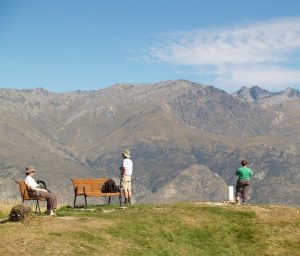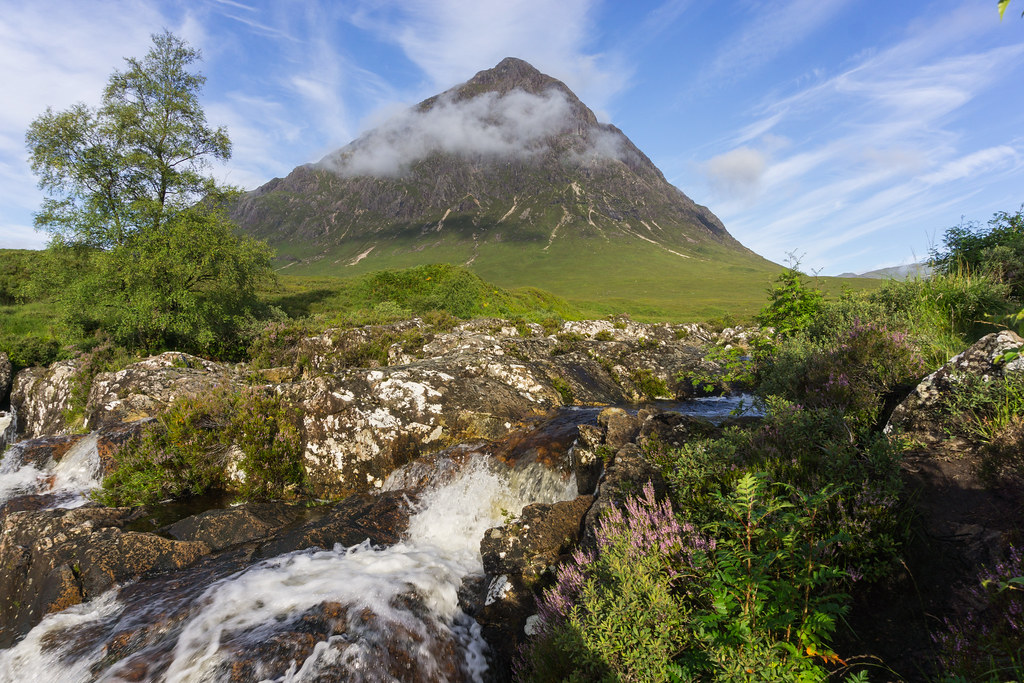Yesterday, I was asked to find an image that captures where I am in exploring and understanding my research. The image that came to mind was hiking up a steep hill. This came to me for several reasons. If you have ever met me in person, you know that I have an issue with breathing. I have a narrow trachea, about half the size of an average person, that makes my breathing laboured and noisy. This is intensified when I hike in the woods. I can feel every slight incline as it becomes more difficult to get oxygen into my limbs; I have to stop often. Now comparing this academic journey to this nasty personal struggle, sounds unpleasant; before I continue, I have to say, I love hiking! I hike often, but I either do it alone or with someone who doesn’t mind stopping often so I can catch my breath.
This hike began at sea level. In my mind, what I understood of research was that quantitative research dealt with numerical data and qualitative did not. For this reason, reading about the qualitative research method was a nice, familiar downhill slope. Mixed Methods research made sense, two familiar methods combined to create more utilizable meta-inferences. I thought I knew what qualitative research was but had never heard of autoethnography. This was the first steep hill for me. I found the academic language made the trail especially rocky. I will need to hike that one again along with phenomenology and Métissage, once I get better shoes.
Twitter was a trail I had started to hike a long time ago but I never really to used it for building a Personal Learning Network (PLN). I used it to follow a few colleagues, receive news, and entertainment. I opened a new account for growing my PLN and am enjoying the new and varied trails it is leading to. Feedly and Trello are like the map/message boards at the trailhead. I have to remember to check them before heading up the next trail. I like these boards as they can be a spot to pause and think, or find a trail I did not know was there. Meeting Pia Russell, Matt Hucolak, and Rich McCue was like finding an interpretational centre; their tour of tools such as Boolean searches in the UVic Library and Zotero have made the trek a lot easier. Right now, Zotero is like my backpack; there is a lot in there and some of it is heavy. I am not sure how Google Sheets will be useful to me but it sure is a cool tool; I will be watching for an opportunity.
The visit and views of Dr. George Valetsianos highlighted some things that I had noticed about social media and some things I had not. I knew that social media could be a treacherous trail for personal opinions and controversial topics; these trails are generally too mucky for me and while I am not afraid to watch others from dry ground, I am not one to wade in. I did not know that this is a particularly female trait or that women are targeted more than men. This is upsetting but makes sense with what I know about some of my female colleagues. It seems that the smaller they are in stature or the younger they are in age, the more problems they seem to have with parents. I do not have many issues with parents. Is it because I am not little and not young? Face to face with a parent is one thing, but opening up on Twitter with trolls, sock puppets and swarms is quite another. My PLN connected me to Heidi N. Moore’s Twitter that made me think of Dr. Veletsianos’s research. The thread and the research together make me wonder about joining in those controversial topics myself. I do not know if I am ready for that, but I will dip a respectful toe in if something needs to be said.
Hello I have a point to make about women, internalized misogyny, and social media platforms.
— Heidi N. Moore (@moorehn) July 25, 2019
Jesse Miller came in to talk about more of those mucky trails on the internet, with respect to children and their parents. He made it clear that we have a lot of work to do in educating children about digital citizenship. Unfortunately, few parents have had this education or informed themselves so they are responsible for putting too much “out there”. For me and Kindergarten, I was thinking maybe there was little to worry about. If they cannot spell, they cannot Google search, right? What I forgot was that often parents’ tabs can come up when they open the Google app and from there, they can just click their way into trouble. The same goes for the YouTube app which many children are familiar with because teachers use it in school and parents use it as a babysitter. For my part, I do try to raise awareness with my students’ parents; I ask them at events, on my class blog and in Freshgrade posts to get explicit permission from parents before posting any children other than their own on the internet. I would like to do more. I would like to find or make a pamphlet to give kindergarten parents about internet safety for pre-readers. Awareness is the first step.
I enjoyed the visit by Dr. Christine Younghusband and Ian Landy as they shared their thoughts on PLNs, But even more, I valued Dr. Younghusband’s views on Indigenous Learning, Indigenous Resurgence, Indigenous Ways of Knowing, and decolonization, along with Dr. Shauneen Pete’s and Colin Madland’s. I saw Dr. Pete speak at an unconference at the beginning of July and I knew I wanted to hear more. What maybe I did not want to hear was that I would have to engage in self-study to get the answers I need. I understand what she is saying though; I know it is my responsibility. It is on my list. I appreciated the notions of storytelling and using Coyote to voice her less polite thoughts. These are definitely things I can get my head around and use. It also set me to thinking about the toys in my classroom. I need to think about decolonizing the choices I give my students for play. What is more white settler than Barbie?! My own indigenous learning is a tricky path but definitely a mountain I want to get to the top of, and soon.
Reading Getting to Grips with Perspectives and Models by Mary McAteer introduced me to another new trail. Action research, with its central focus of improving practice, is a natural fit for teachers. I believe that many teachers are regularly assessing and making changes to their practice but it’s usually a change to things external to themselves, such as the lessons, materials, or the physical space. To make a change to oneself, that is a challenge. So much of what I do seems instinctual so noticing it, recording it, assessing it and, if necessary, changing it would be tricky. There are times, of course, when I notice a mistake I have made or a situation where my intervention fails and I think of alternate ways for next time. How do I catch the more subtle traits that need to be addressed?
When Trevor Mackenzie visited, I have to admit, I was not that interested in following that well-travelled trail. My school has spent quite a lot of time on that path. It was not until someone connected inquiry to decolonization that I gave it another look. Could free inquiry help our class/community account for indigenous learners’ identities? All our learners’ identities? Kindergarten is full of inquiry-based, project-based, and play-based learning. Can I add some purpose and structure to their explorations? Would structure foster their curiosity or stifle it?
Keeping a research diary was the trail not taken. I had in my head that it was something I would start later, after I had determined my “big question”. I perceived the goal of the research diary to be aiding in the creation of a thorough, critical, and generative Literature Review. In hindsight, it would have been much easier to write this blogpost if I had started a research diary. Lesson learned. I will start one tomorrow, or when I figure out where I want to write it: as a page in this blog, in a notebook, in OneNote, or in a Google Doc. Where does everyone else write their research diary?
It’s funny how quantitative and qualitative research were the methods I was most familiar with, if not the only methods I was familiar with, at the beginning of this journey, but now are not the ones at the forefront of my mind. Self study, action research, and research diary methods have now moved to the forefront. They seem related to me, like three trails leading to the same peak.
Dr. Martin Weller and Dr. John Willinsky spoke to us about the growing acceptance of open educational practices, open scholarship, and open access. I have been using LibreOffice for years but never really thought about the significance of that. I just assumed the creators must be getting paid somehow. I wonder what other open access I have enjoyed without thinking about it. I know I have done a lot with online images in my work at school. I did not think anything of copyright as I copied pictures for lessons or made resources for my class. It was only recently that I learned about Creative Commons and attribution. I am still working out all the ethics around this but I will certainly be applying what I know in the future. As for open scholarship, I hope that I can access scholarly works for my continued research because I can only choose to climb one mountain for this masters project and I have at least three mountains in mind. For now I will clamour about in the foothills, stopping to breathe, and deciding which mountain to climb first.










 In the film,
In the film,  It’s not until the actors see what the builders are doing that they stray from their role-play. It’s not until the fashion experts, see what the artists are d
It’s not until the actors see what the builders are doing that they stray from their role-play. It’s not until the fashion experts, see what the artists are d
Recent Comments